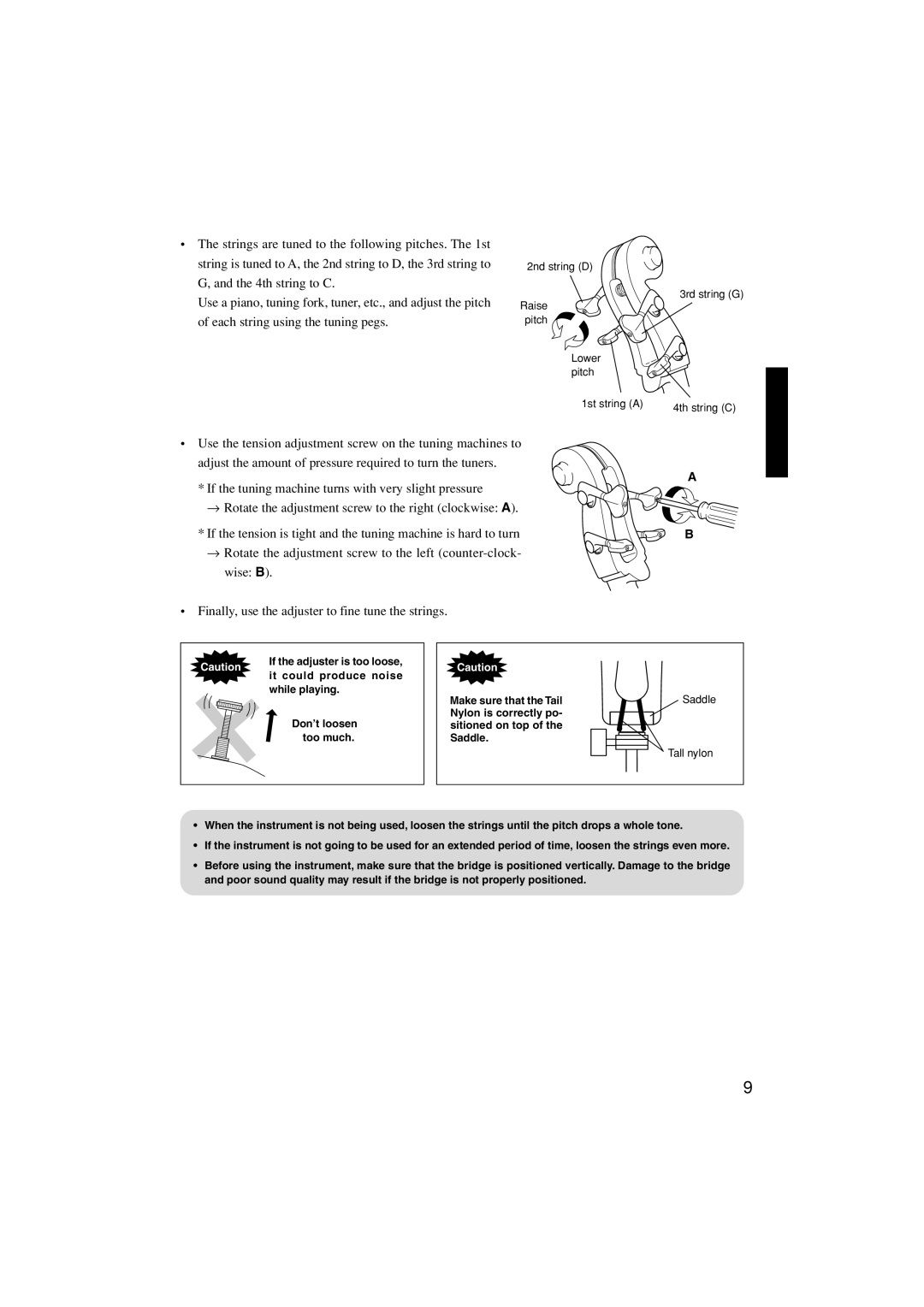
•The strings are tuned to the following pitches. The 1st string is tuned to A, the 2nd string to D, the 3rd string to G, and the 4th string to C.
Use a piano, tuning fork, tuner, etc., and adjust the pitch of each string using the tuning pegs.
2nd string (D)
3rd string (G)
Raise pitch
Lower pitch
1st string (A) | 4th string (C) |
|
•Use the tension adjustment screw on the tuning machines to adjust the amount of pressure required to turn the tuners.
*If the tuning machine turns with very slight pressure
→Rotate the adjustment screw to the right (clockwise: A).
*If the tension is tight and the tuning machine is hard to turn
→Rotate the adjustment screw to the left
A
B
• Finally, use the adjuster to fine tune the strings.
Caution | If the adjuster is too loose, | |
it could produce noise | ||
| ||
| while playing. | |
| Don’t loosen | |
| too much. |
Caution
Make sure that the Tail Nylon is correctly po- sitioned on top of the Saddle.
Saddle
Tall nylon
•When the instrument is not being used, loosen the strings until the pitch drops a whole tone.
•If the instrument is not going to be used for an extended period of time, loosen the strings even more.
•Before using the instrument, make sure that the bridge is positioned vertically. Damage to the bridge and poor sound quality may result if the bridge is not properly positioned.
9
